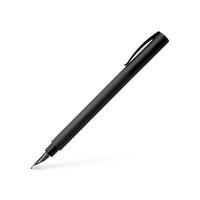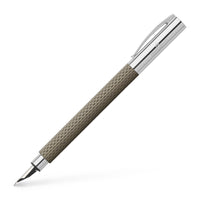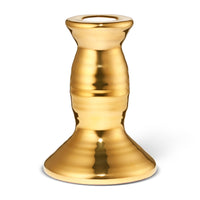About Vienna Bronzes


Since 1850, Fritz Bermann's Vienna Bronzes have been cast using traditional methods and have been lovingly painted by hand. Nineteenth century artists created nearly 10,000 models. The most beautiful models from this wide selection are made by Fritz Bermann.
New editions are produced regularly to assure interested buyers a varied assortment. The registered company hallmark on every figure guarantees that it is genuine. The company's customers are art lovers and collectors - people who enjoy giving and owning beautiful items and who appreciate the tradition of "Wiener Werkstätten".
BERMANN Mathias founded the manufactory in the year 1850 in Hernals near Vienna at his own home in Veronikagasse 16. He began with the production of metal decoration for pipes and started to mould, chase and to colour animal figures made of bronze. During the World Exhibition in the year 1873 a certificate of recognition for his products was given to him (by the Austrian government).
BERMANN Franz expanded the production by Art Nouveau objects, seals and Parforce groups.
BERMANN Fritz, graduated at the Vienna Art Polytechnic Institute and took over the company in 1927. He had innumerable models being created in cooperation with Viennese sculptors and modelers. Under his management there were also produced lighting accessories. The models survived undamaged World War II in the cellar of his house which had been completely destroyed. He continued the production during the economic crisis of the twenties. In addition, the collection of Vienna Bronzes was expanded through the purchase of Rogner Company’s models. After Fritz Bermann´s death in the year 1967, his wife Herta Bermann continued his work and had an art foundry being constructed in the backyard. In the year 1984 she made her first license agreement with company Warne from London to add the world-known Beatrix Potter figurines to her production. Rider figurines of the famous Spanish Horse Riding School in Vienna (Lipizzaner - horses) were made as well as the famous animal bands were called into life.
Helga Bohatschek-BERMANN, led the manufactory from 1973 -1988. During this time the company was awarded with the Austrian State Coat of Arms (6.3.1979).
Ing. Ernst HRABALEK acquired the company after Ms. Bohatschek-BERMANN ´s deserved retirement. He managed the company Fritz Bermann until the year 1990.
Alfred KIRSCHNER has been owning and managing the company Fritz BERMANN since the year 1991 respecting the traditional production of the Bermann dynasty. FRITZ BERMANN employs academic painters as well as a graduate of the University for Applied Art, Mr. Jiranek. He creates further models for the production of Vienna Bronzes focusing on quality and detail.
Thousands of cats in Viennese coffee shops, frogs at lakes with water lilies, all our favorite pets, exotic cats, complete oriental neighborhoods, elegant-seductive ladies of the Jugendstil, representative statues of kings and composers, stylish vases, lights, chandeliers and writing equipment handicraft in masterly perfection and quality.
Charming testimonies to the passion of collecting, Viennese tradition and culture of giving, elegant, grotesque and magic copies of Fashion, fantasy and the genius of the period en detail. These little statues have managed to slip from the 19th century and the early 20th century into our modern life.
The WIENER BRONZEN were created in the epoch of the Biedermeier where the self-confident bourgeois developed a new culture of living and social life. Very soon the WIENER BRONZEN were considered as show-pieces in cupboards, luxurious toys and charming presents. Every apartment of the Wiener Ringstraße with its splendid furniture demanded for representative pieces of décor and commodity.
Our originals are produced exactly the same way as they were produced in the epoch of the Biedermeier where the Wiener Kunsthandwerk had achieved its best performance. That expresses that with every item of our production you do not only get a piece of splendid tradition of handicraft bur also a piece of Viennese history.
In the mIddle of the 19th century the manufacture of precious metals reached its climax and the WIENER BRONZEN were founded a union of the brass-founders. They had 120 members but very few are left nowadays.
During that time they even published their own newspaper called “WIENER BRONZEN the official mouthpiece of the union of the producers of bronze products, engravers and allied traders in Vienna”.
Two linked events affected the Viennese culture and economy: the big deficit project of the World Exhibition in Vienna in 1873 as well as the stock market crash was responsible for the fall of the Austrian economy. Vienna struggled hard to recover slowly. Step by step succeeded the leitmotif of the operetta “Die Fledermaus” by Johann Strauß in 1874: “Happy is he who forgets what cannot be changed.”
Vienna at the turn of the century and in the early 20th century: political changes, fundamental change over to modernity, World War I.
All these big changes during the turn of the century were extremely reflected in Viennese art. Already the unreal-dreamy atmosphere of the 19th century was influenced by the foreboding of the farewell and the breakdown of the monarchy and its social order.
An important event in art was the foundation of the union of artists WIENER SECESSION in 1897 with its motto “To every period its art, to art its freedom.”
With this followed the fundamental change to modern art and the connection to the international art scene. Some famous representatives of the group were Gustav Klimt, Otto Wagner, Koloman Moser, Josef Hofmann followed by Egon Schiele and Oscar Kokoschka.
The sphere of handicraft was regarded as being of enormous importance. In 1903 Josef Hofmann founded with the industrialist and designer Koloman Moser the WIENER WERKSTÄTTE. Their principle was that art should be accessible for every body. Artisans should no longer stay anonymous but are as responsible as artists for their creations. The artisan should enjoy all technical achievements, best working conditions and a good working climate. To achieve the desired perfection of an item they rather worked ten days on one piece than to produce ten pieces a day.
The Biedermeier was regarded as a forerunner of the modernity because its practicality was exemplary for all products of the WIENER WERKSTÄTTE.
Productions and Techniques of the Bronze-Works
In general “bronze” is considered to be an alloy of copper and tin, but it can also be an alloy of copper and another metal. The word “bronze” originates from the Latin Word “Aes Brundisium” = ore from Brindisi and came via Italian and French into the German language.
The Stone Age ended with the manufacture of copper approx. in the first century B.C. in Europe. Soft copper is not ideal for cast iron, but the addition of tin as an alloy makes it more suitable. Especially during the period of the Romans copper-tin-alloys were often used for the cast iron of small objects. During that time as well as in antiquity small solidly cast bronzes were produced in a fill up. Thereto were formed moulds of wax including drains for air and cast iron. All that was covered with clay. The mould was dried and burnt. At the same time the wax melted and created a hollow space which was filled up with liquid bronze. After the cast iron and the cooling the mould destroyed and the core removed. After the removal of all the drains the whole surface was engraved by hammer and punch followed by the very costly and detailed painting.
Animal Caricatures
At the beginning lovely small statues of animals were fashionable models of handicraft in France. Our stylized cats, frogs and dogs which show little human weaknesses are Viennese specialties. They are treasures of the Biedermeier with their pleasure in caricatures, mockery and satire. Very popular were the published cartoons of that time which served as models, too. Nowadays, very much adored are also the life-like statues of pets and forest animals.
Since the turn of the century hunting is no longer only accessible for high society but also for other levels of society. Everybody was driven by the passion for hunting and for that reason WIENER BRONZE produced the apt statues elegant groups of the hunting society in British style and many forest animals.
In the early 19th century the inhabitants of Vienna already had the possibility of admiring exotic animals in the Imperial Menagerie the imperial zoo.
In 1818 the first giraffe caused a big sensation among the Viennese's and the artists of the WIENER BRONZEN spent hours and hours in front of the cages to model wild cats, elephants, monkeys and parrots.
In the 19th century where travelling was still a big adventure people discovered their special liking for the mysterious Orient. Even if one did not dare to set out for a costly and dangerous journey one was able to bring the flair of the Orient right into his living-room.
Expeditions of Austrian explorers in the middle of the 19th century brought early pictures of a new world. Due to the construction of the Suez Channel and the trip to the Orient of crown prince Rudolf the enthusiasm for the Orient grew. The famous and remarkable “Turkish Room” of the crown prince's apartment in the WIENER HOFBURG is a testimony to the fashion during that period. The major part of the furniture's had been brought along from his trips in 1881.
Nowadays we do not experience the strangeness of harems, carpet dealers and veiled beauties any more but it still catches our minds with its magic and fantasy.




